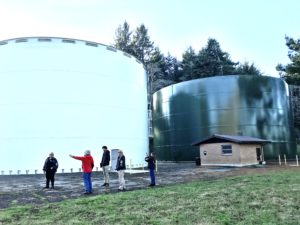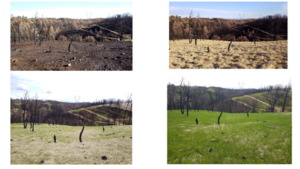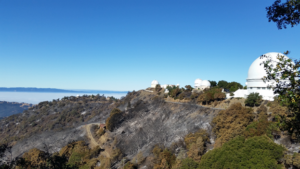Nation’s First Program Helps Fund Infrastructure Projects in California
SACRAMENTO — The California Governor’s Office of Emergency Services (Cal OES) today announced the release of applications for a first-in-the-nation grant program focused on building community resilience among vulnerable individuals living in areas of the state most susceptible to natural disasters. The program, known as Prepare California, is aimed at reducing long-term risks of disasters, such as flooding, earthquakes, wildfires, landslides, or dam failure, by investing in infrastructure improvements designed to protect communities.

Cal OES staff visit a completed project in Humboldt County that replaced redwood water tanks with tanks made of fire-resistant materials to protect critical community water resources from wildfires.
“We know that our vulnerable communities are disproportionately impacted when a disaster strikes,” said Ryan Buras, Deputy Director of Recovery Operations at Cal OES. “Prepare California targets funds to areas where they are needed most to improve infrastructure, mitigate disasters, and save lives.”
Prepare California leverages funds approved in Governor Gavin Newsom’s 2021-22 State Budget and is designed to unlock federal matching funds for improvement projects that vulnerable communities would otherwise be unable to access.

A residential home elevation program along the Russian River mitigated the risk of repeated damage from flooding in Sonoma County.
ELIGIBILITY
Prepare California funding is intended to support communities that are considered socially vulnerable and have a high hazard risk. The state sought to identify these communities by prioritizing California census tracts according to their estimated hazard exposures and social vulnerability.
- Hazard Exposure is based on the State Hazard Mitigation Plan that includes an analysis of several datasets related to wildfire, flood, earthquake, drought, and heat wave frequencies.
- Social Vulnerability is based on the CDC Social Vulnerability Index and is defined as the factors, including poverty, lack of access to transportation, and crowded housing, that may weaken a community’s ability to prevent human suffering and financial loss in a disaster.

A state-funded slope stabilization project within the burn scar of the Carr Fire prevented soil erosion and runoff into water sources. These photos show a slope before and after the hydroseeding and other erosion control measures were implemented.
PROJECT TYPES
Funding under the program may go to support projects addressing concerns in one or more of the following focus areas:
- Prevention– Government, administrative, or regulatory actions that reduce long-term disaster impacts such as the creation of local hazard mitigation or evacuation plans, building code creation and enforcement, and climate adaptation planning.
- Property Protection– Modification of buildings or structures to protect them from a hazard or removal of structures from a hazard area. Includes acquisition, elevation, relocation, establishment of defensible space, and structural and non-structural retrofit.
- Public Education and Awareness– Actions to inform citizens and elected officials about hazards and ways to mitigate them. Includes outreach projects, real estate disclosure, hazard information centers, and school-age and adult education.
- Natural Resource Protection– Actions that minimize hazard loss and preserve or restore the functions of natural systems. Includes sediment and erosion control, stream corridor restoration, watershed management, forest and vegetation management, and wetland restoration and preservation.
- Emergency Preparedness– Actions that protect people and property during and immediately after a hazard event. Includes warning systems, emergency response services, and the protection of essential facilities.
- Structural Projects– Actions that involve the construction of structures to reduce the impact of a hazard. Includes dams, setback levees, floodwalls, retaining walls, and safe rooms.

A vegetation management and defensible space project around the Lick Observatory in San Jose protected the facility during the 2020 wildfires.
FUNDING AVAILABLE
- $15 million in state funding dedicated to helping jumpstart eligible communities in their development and implementation of resilience planning and activities.
- $85 million in state funding to cover the required 25 percent local cost-share for eligible communities applying for federal grants.
HOW TO APPLY
Communities interested in participating in the program can find additional details, background, and application instructions at caloes.ca.gov/preparecalifornia.
